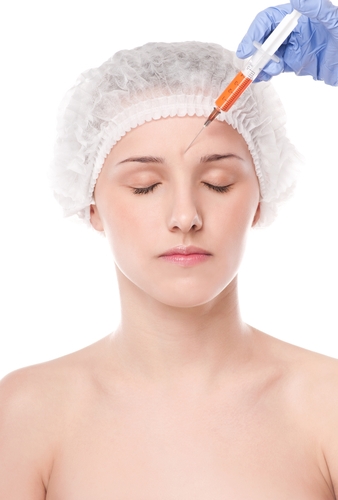Recent research published in the journal Plastic and Reconstructive Surgery indicates the real effect Botox injections can have on the face using heat map technology, including significant cosmetic and psychological advancements.
Studying Botox Injections & Results Through Heat Mapping
A team of researchers at the Perelman School of Medicine at the University of Pennsylvania created a color-coded heat map using 3D speckle tracking photogrammetry. Although the benefits of Botox have been known for a while, these researchers wanted a more visual affirmation for themselves and the patients that undergo its related procedures.
The study included 14 participants who were observed before and two weeks after a Botox treatment of 20 filler units in the area between the eyebrows.
Methodology of the Botox Study
The researchers applied white foundation and black speckle makeup to the participants, with light blue representing wrinkles. Two weeks after treatment the light blue was almost completely replaced by light green and yellow, indicating wrinkle reduction had taken place.
Recorded Results from the Botox Study
- Decreased horizontal wrinkling from 9.11 percent to 2.60 percent.
- Decreased forehead treatment from 4.83 percent to 0.83 percent.
- The vertical treatment also decreased by a significant amount as well.
“As new therapies and expanded applications become available for antiaging and the treatment of neuromuscular disorders, this method may make it possible to quantify clinical efficacy and establish precise therapeutic regimens,” said senior author Ivona Percec.
The Future of Aesthetic Heat Mapping Studies
This technology can also be used in the future to identify better dosage amounts. Additionally, heat mapping technology can eliminate mistakes and enhance the overall Botox experience. Allowing a patient to see a visual representation of their change can also help alleviate their reservations. Furthermore, a heat map can increase patient satisfaction after the procedure.
In further advancements, this technology could also be used to reduce facial paralysis caused by a stroke or other related medical conditions.
Medical Uses for Botox Injections
Beyond reducing fine lines and wrinkles, Botox injections treat several medical conditions. The neurotoxin, Botulinum toxin, which is the main ingredient in Botox regulates the nerves in other areas of the body. As a result, Botox injections are effective at treating excessive sweating, bladder control and migraines.
Are Men or Women More Likely to Get Botox?
According to the 2014 American Academy of Facial Plastic and Reconstructive Surgery (AAFPRS) “Statistics on Trends in Facial Plastic Surgery Report” women are still the most popular patient for this procedure.
In the U.S., women make up 82 percent of all surgical and non-surgical facial plastic surgery procedures. Botox are still one of the most common non-surgical procedures, in addition to microdermabrasion treatments and skin resurfacing and peels.
Botox is most commonly performed on women ages 35 to 55.
How Effective are Botox Injections?
Botox temporarily erases or reduces horizontal forehead lines, vertical frown lines and lines between the brows. Treatment usually lasts about four months but varies from patient to patient.
If you are interested in learning more about a Botox procedure, schedule a consultation with Dr. Lett of The Lett Center for more information.


